Clean SF
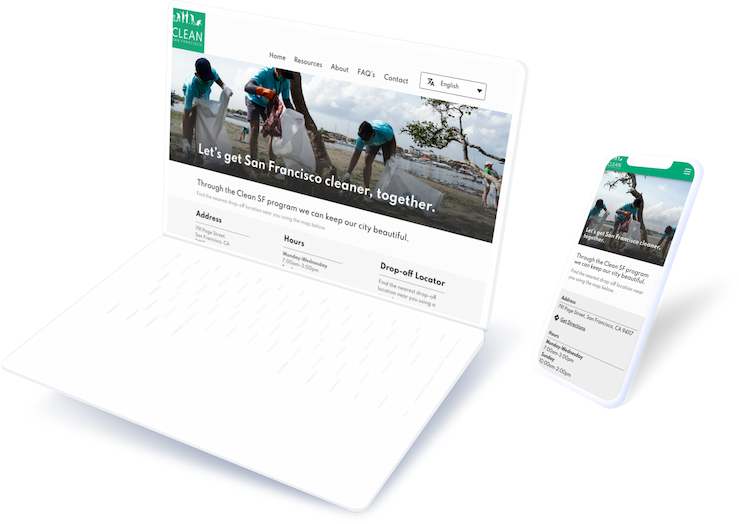
Project Overview
Research
To find a possible solution for San Francisco’s litter difficulties I conducted interviews of locals and explored existing programs both city-run and independent organizations.
Goals
- Understand the market and identify target groups
- Explore resident’s experiences with litter and waste management in the city
- Learn how existing community cleanup groups fulfill the needs or residents
- Understand goals, needs, and motivations within the target group
User Interviews & Insights
I interviewed residents of San Francisco to uncover their opinions of the current state of waste management and to gain insights regarding willingness to participate in community cleanup events. In addition, I asked a few questions about how people preferred to receive or find information regarding citywide programs.
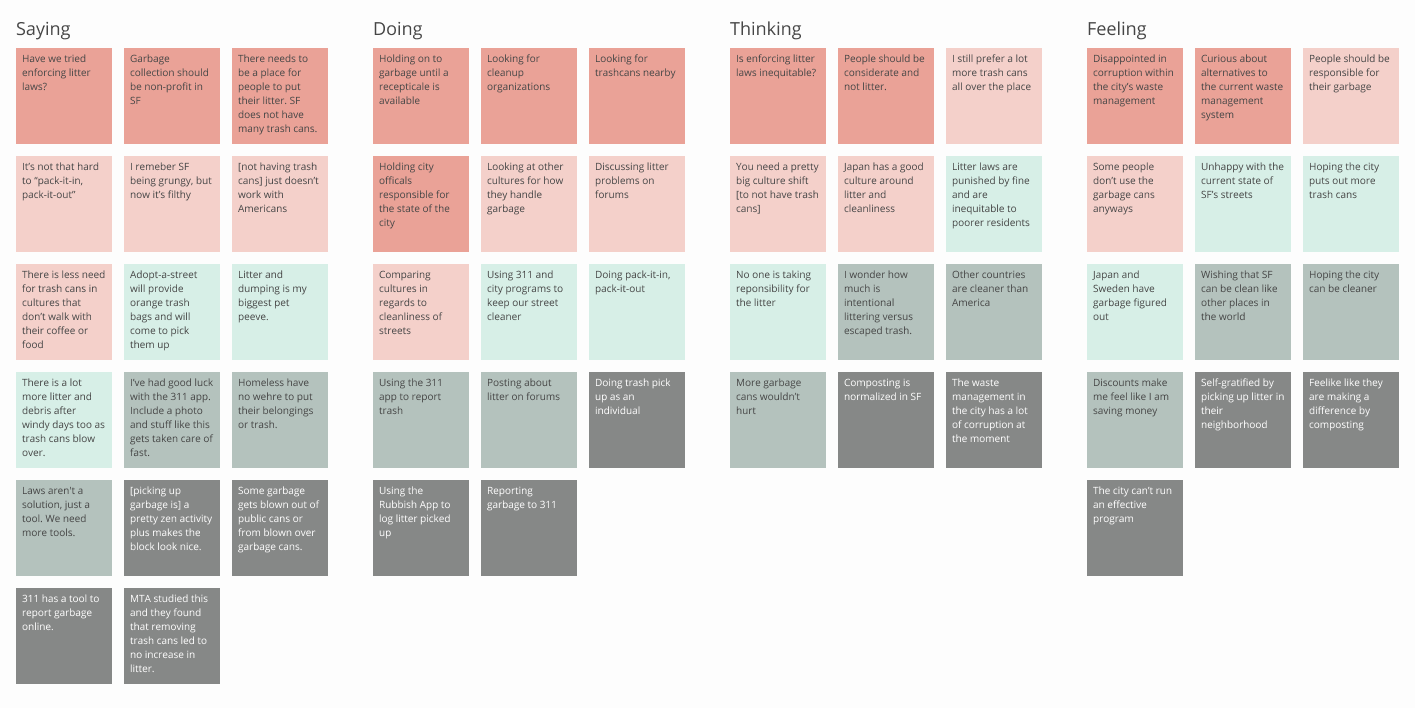
Insights
- People participate in established city-run programs like composting and 311
- Residents will engage in community cleanup events by non-profit organizations
- People believe a culture shift will aid in cleaner streets
- People get information about cleanups online
Needs
- An institutionalized cleanup program that happens on a daily/weekly basis
- A culture shift to aid in keeping the streets of San Francisco clean
- Information about available programs needs to be available from more than one source
Understanding Existing Services
I chose to take a closer look at four of the most active cleanup groups in San Francisco; one was city-run and three were non-profit groups. I explored how easy it was to get information about each organization, how active they were, what unique offering or service they were bringing to San Francisco, and how they engaged with the community to gain volunteers and support.
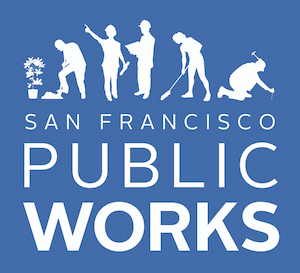
San Francisco Public Works
Strengths
- Responsive site with good contrast
- Clear instructions and simple sign up with or without the internet
- Ability to work as an individual or as a group
- Provides information about other volunteer opportunities
Weaknesses
- User flow to arrive at volunteer information is clunky with too many steps from main DPW page
- Graphics load slow with a large blurry spinning wheel
- Program is mainly spread through word of mouth
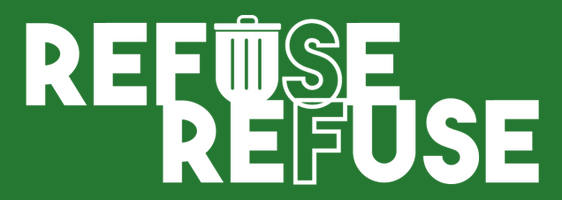
Refuse Refuse
Strengths
- Clear navigation and information
- Provides resources for other volunteer opportunities
- Active group with info about planned events
Weaknesses
- Does not address cultural differences, stating that we can be like Japan in terms of cleanliness
- Clearly favors certain parts of the city
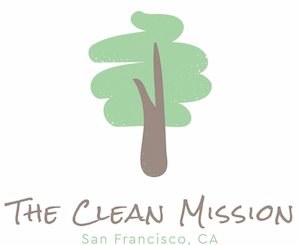
The Clean Mission
Strengths
- Connected with local small businesses for sponsorship
- Site navigation is clear and easy
Weaknesses
- Inactive and out-of-date information about COVID regulations
- Services only a few neighborhoods in the city
- Not much information about how they work or how cleanup events are conducted

Rubbish
Strengths
- Unique offering to help with litter problem
Weaknesses
- Users must purchase a garbage picker that is remarkably unrefined with 3D printed parts and unorganized wires
- Questionable utility of data collection
- Surprisingly little information on organized cleanups or about the company in general
- Seems to be focused on one of the already cleaner areas of SF
Additional research indicates that the best way to encourage a behavior is to make the desired choice as easy as possible for a person. This is demonstrated through the psychology around opt-in versus opt-out policies. Programs that have been proven to work through this method include countries with opt-out organ donations significantly higher than countries with opt-in policies. And although San Francisco’s own composting program is not technically a choice, but enforced by the city, it is widely successful in reducing landfill waste and a normalized change for resident’s waste management.
Municipal programs have already changed SF’s waste culture and can again.
Designing for Simplicity
Site Map
All links and resources have been kept within three clicks for a user on any page so any needed information about the program is easy to find and to improve SEO.

Paper Wireframes
I quickly laid out a few versions of each of the main pages of the site in paper wireframes to decide which layout best suited the information.
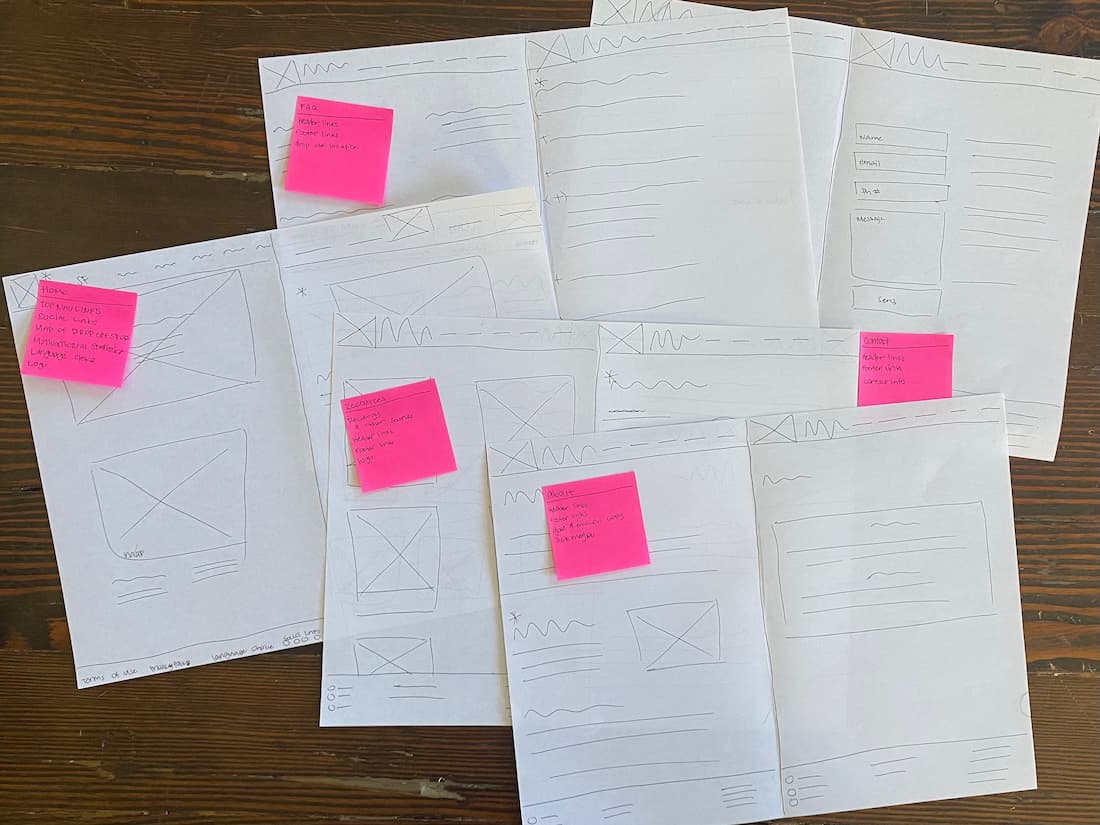
Lo-Fi Digital Wireframes & Hi-Fi Mockups
I then developed the paper wireframes with the best features into lo-fi digital wireframes and then into hi-fi mocks in Adobe XD. These are the wireframes and mocks for large,medium, and small sized screens.
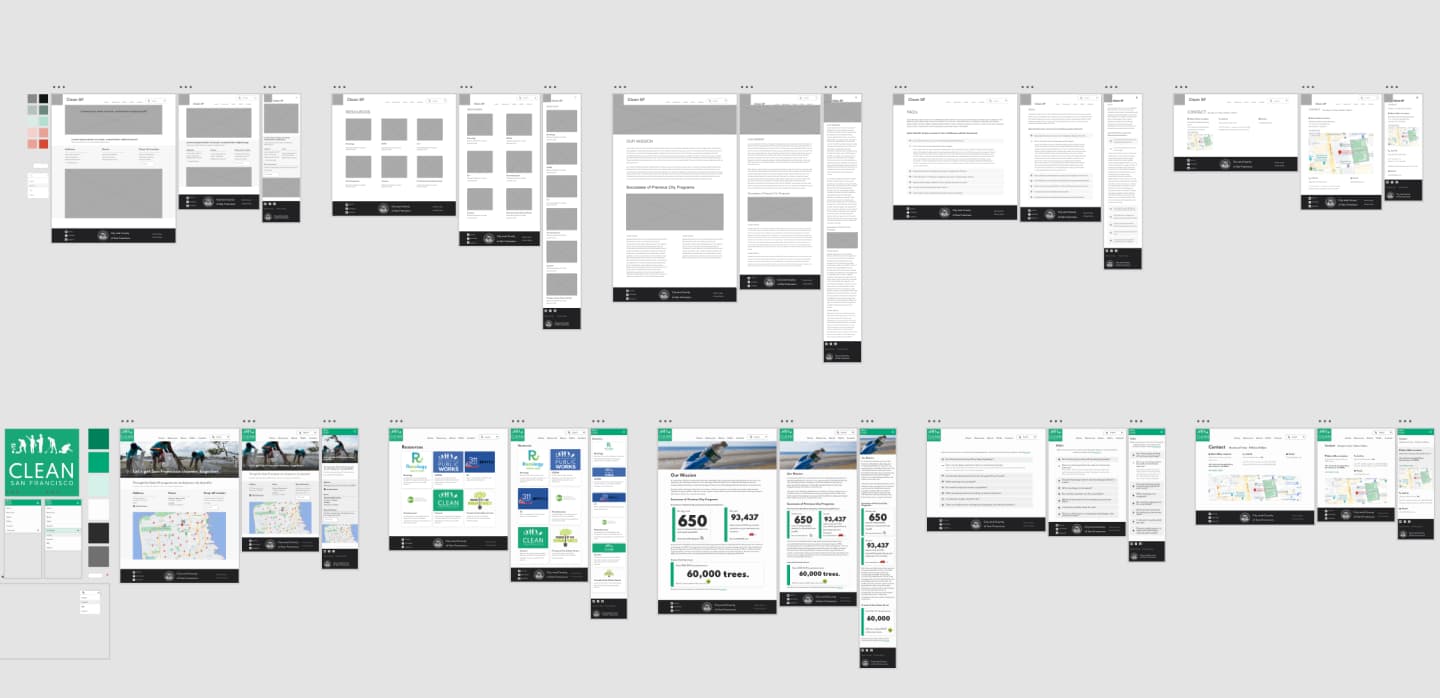
Style Guide
This is intended to be a fictitious government site and is (mostly) compliant with both the San Francisco Design System and the U.S. Web Design System. The SFDS is a little sparse in some areas so I made a few decisions on my own so all elements are cohesive and accessible.
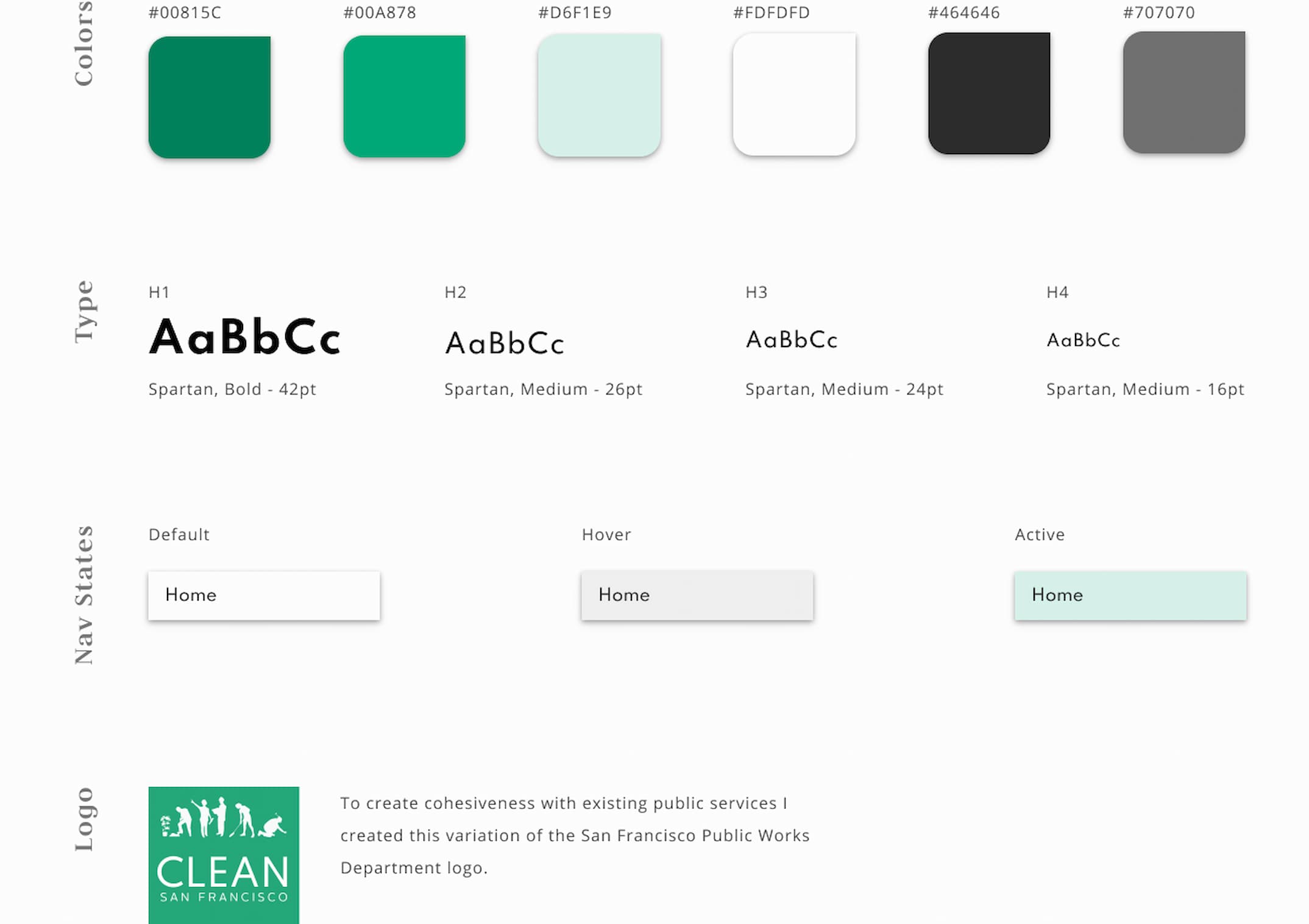
Reflection
Clean SF was a big lesson for designing for accessibility which was initially my intention for building a fictional government website. If I were on a design team for the city, I would make suggestions and contributions to the existing design system so that all city and county websites are more cohesive.

